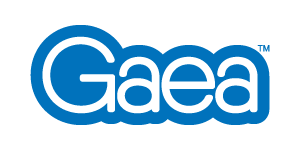 Maintaining secure prescription drug supply chains has become a top priority. According to the World Health Organization, counterfeit prescription drugs contributed to more than one-million deaths worldwide in 2019. To protect patients in the USA, Congress passed the Drug Supply Chain Security Act (DSCSA) in 2013. The DSCSA went into effect in 2015 but will not be fully implemented until 2023.
Maintaining secure prescription drug supply chains has become a top priority. According to the World Health Organization, counterfeit prescription drugs contributed to more than one-million deaths worldwide in 2019. To protect patients in the USA, Congress passed the Drug Supply Chain Security Act (DSCSA) in 2013. The DSCSA went into effect in 2015 but will not be fully implemented until 2023.
The DSCSA mandates complete unit-level traceability in the entire pharma supply chain, affecting how supply chains track, store, and use data. It requires the use of an electronic system to track products from manufacturing all the way up until they are in consumer hands. Pharma companies are already reviewing solutions that will help them comply with the DSCSA, but how does it affect today’s supply chain, and what areas should companies review?
Starting in 2019, the DSCSA mandated that all manufacturers must have a central database with serialization for drug products in the USA. The DSCSA requires four key elements on a two-dimensional barcode that must be kept for six years:
- Global trade identification number;
- Serial number;
- Lot number, and;
- Expiration date.
Beginning in 2023, all information must be tracked at the individual level along the supply chain, and all updates and modifications must be entered into the system within 24 hours.
In addition, the USA allows distributors to ship units of pills in packages of different quantities for individual bottles to pharmacies, sole practitioners, hospitals, care units, and other medical facilities. If a pharmacist or designated prescriber breaks a 100-unit bottle into 20-pill prescription bottles, a unique serial number must be tracked on the new 20-pill prescription bottles, increasing data complexity across the supply chain.
Key areas follow below that pharma manufacturers and all parties involved with distributing pharma products should review to maintain compliance in 2023 and beyond.
Data Collection
Companies should be proactively reviewing whether or not they are collecting all the data required by the DSCSA. Two use cases are examined below: companies that are not currently recording the data and companies are recording the data but do not share it.
The first group, not collecting data, could begin exploring new software and IoT devices that allow them to track required data, for example, temperature sensors and product location (via GPS tracking software).
The second group, those that have systems in place but do not share data, can move on to answering the question, “how do we compile all the data in one place for a single source of truth?”
Data Storage
One of the most crucial components to review and plan for is data storage. Supply chain parties including manufacturers, re-packagers, wholesale distributors, and dispensers will have to collaborate to centralize all data for every drug and patient, and make sure it is accessible in one shared database. The goal is to have a single source of truth to increase patient safety protection.
The good news is that solutions already on the market, like blockchain technology, fulfill this need. Moreover, blockchain can be integrated with warehouse management systems like transportation or labeling software to ensure data isn’t lost or corrupted at transactions within the supply chain flow. You may wish to learn more by reviewing many great articles on how to leverage blockchain potential.
Cybersecurity
With all of the data centralized in one location, the next question to ask is, “how do we ensure secure management of that data?” Companies should explore technology that safeguards patient privacy and has cloud security certifications like VAPT. Sharing data in a confidential and safe environment is vital to protect patient privacy. For instance, blockchain does not work as a centralized gatekeeper but instead uses computers, also called nodes, to share information in an almost hackproof way.
Develop or implement
With storage and security in hand, companies should procure or develop software that meets DSCSA compliance. Procuring existing software is probably the most common approach as it requires fewer resources, but it also involves finding the right solution implementation partner and one who, in some cases, may also run it.
If choosing the implementation route, look for partners with a track record of implementing diverse supply chain solutions. For example, Smith Manufacturing wants to use blockchain to gain full visibility of their drugs and control the cold chain while shipping internationally. For full visibility, Smith decides to integrate blockchain with its warehouse management systems (WMS), transportation management systems (TMS) and global trade management (GTM). Partners with extensive experience in WMS, TMS, and GTM software are most likely to succeed with blockchain implementation and integration with WMS, TMS, and GTM.
Label templates
Label templates must also be reviewed and updated to include new data and barcodes required by the DSCSA. In some cases, label templates may even need to be redesigned so that all of the information fits and is legible.
Companies may wish to implement label-management software to create a central label template repository. Labeling software provides a single source of truth for label templates and ensures that all internal and external team members always have access to correct label templates.
Conclusion
The DSCSA regulation is in large part responsible for speeding up a digital revolution in the pharma industry with a focus on increased data tracking, collaboration, and an interconnected supply chain. Pharmaceutical companies and those involved with the pharma supply chain are working around the clock to put solutions in place that meet DSCSA requirements to improve patient safety.
Contact Gaea today to learn how we can help you implement a supply chain / blockchain solution that matches your unique enterprise needs.
